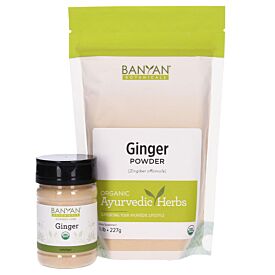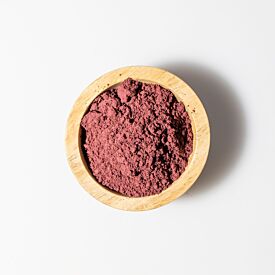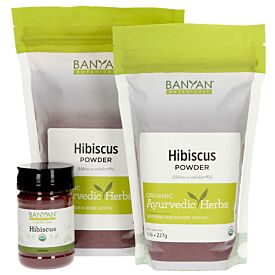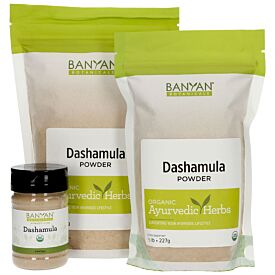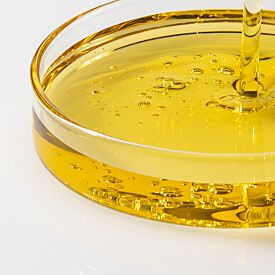Ayurveda’s Carrier Substances

Like Western medicine, Ayurveda recognizes a number of tissues and channels (physical and energetic pathways) throughout the body, the most substantive of which largely correspond to the physiological systems identified by modern medicine (e.g. the digestive, circulatory, urinary, skeletal, and nervous systems). Ayurveda also teaches us that certain substances have a particular affinity for specific tissues and channels in the body. A carrier substance (anupan or anupana, in Sanskrit) can be used to help catalyze the delivery of a particular herb or formula to a specific tissue or channel, to encourage its penetration deep into the cells, or to moderate its effect in some way.
While it’s true that some of Ayurveda’s channels are rather physical in nature, and can be readily understood anatomically, others—like the channel of the mind (mano vaha srotas)—are far more subtle and energetic in nature. So it is essential to understand that, in Ayurveda, a channel (nadi or srotas, in Sanskrit) can be physical, energetic, or, as is sometimes the case, both simultaneously.
Now, in order to fully grasp the ideas that we are about to explore, it is helpful to loosen one’s attachment to literal interpretations of anatomy and physiology. Ultimately, what’s happening when we engage the use of a carrier substance is far more than a chemical reaction, though this can certainly be part of the equation. In some ways, it makes sense to liken the use of anupans to alchemy. In fact, some of the most ancient Ayurvedic anupans relied on alchemical processes to make potentially toxic carrier substances safe for human consumption. The anupans discussed here are all safe and benign, but the very idea of directing herbs with a carrier substance can sometimes challenge traditional Western sensibilities. Therefore, in this context, we invite you to open your mind, consider the subtle ways in which matter and energy can interact within the body, and let curiosity be your guide.
Anupans Are Optional
Before we go any further, it is important to recognize that, as complex and powerful as the Ayurvedic art and science of using carrier substances is, it is also completely optional. And because both the herbs and the carrier substances we will introduce are generally quite safe, it is perfectly acceptable to experiment and play with using different types of anupans to determine what will best serve your path towards optimal health.
At the end of the day, the innate intelligence within both your body and your herbs will work together synergistically to promote healing. The truth is that even warm water is a powerful carrier substance. So if at any point, you feel intimidated or overwhelmed, please come back to the basic understanding that the intention you are holding for your herbs is plenty potent to deliver them exactly where they need to go. Being clear about how you hope your herbs will serve you can be a powerful catalyst in its own right. Adding a carrier substance is simply a means of increasing the efficacy and efficiency of the process.
Of course, if you have received instructions from a practitioner as to the carrier substance that will best suit you, please stick with those guidelines. When in doubt, take your herbal tablets with warm water (a relatively neutral carrier substance) and trust that the combination of your body’s intelligence, your intention, and the life-force energy of the herbs themselves will be enough to deliver your formulas precisely where they are needed. Otherwise, enjoy exploring the use of different carrier substances and notice their impact on your body.

What Is a Carrier Substance?
An anupan, or carrier substance, is a substance that is either mixed with or taken alongside an herb or formula with the idea that it will serve as a messenger, a catalyst, or a moderator for the herbs. Ayurveda values particular carrier substances for their ability to carry herbs and formulas deeper into specific channels or tissues, and also for their capacity to moderate any potentially aggravating effects.
Common Ayurvedic anupans include water, ghee, honey, milk, and aloe vera juice or gel. Even the subtlest distinctions between carrier substances can make a difference. For example, cold water will reduce pitta and temper agni (the digestive fire), which can be useful when the digestive fire is intensely hot. Warm water will tend to provide a rather neutral vehicle for herbs. While hot water will stimulate the digestive fire, clear natural toxins, and balance both vata and kapha.
Common Carrier Substances
The Ayurvedic tradition recommends a wide range of anupans for different tissues, systems, and subtle channels in the body, not all of which are easy to come by. That said, it is worth exploring some of the most common Ayurvedic carrier substances—and the tissues, channels, and systems toward which they tend to direct herbal constituents. First, let’s look at the substances themselves to gain an appreciation for their qualities, affinities, and their impact on the doshas:


- Almond Milk. Almond milk (especially when made fresh) is sweet, cooling, and nourishing. It has an affinity for the muscles, bones, nervous system, male reproductive system, and the mind. It is pacifying to both vata and pitta.
- Aloe Vera Juice or Gel. Aloe vera is sweet, astringent, cooling, and deeply soothing. It has an affinity for the stomach and small intestine, the blood, as well as the female reproductive system, and is pacifying to all three doshas.
- CCF Tea (Cumin, Coriander, Fennel). CCF Tea is sweet, mildly heating, and deeply detoxifying. It has a strong affinity for the urinary system, but can also be used to kindle the digestive fire, and remove natural toxins. It is pacifying to all three doshas.
- Chyavanprash. Chyavanprash is an ancient Ayurvedic formula—a jam that combines the potent rejuvenating qualities of the amalaki fruit with powerful carrier substances that help its benefits penetrate the tissues. Chyavanprash is a powerful rejuvenative that is sweet, warming, and also has the capacity to kindle the digestive fire without aggravating pitta. While it has many uses and benefits in its own right, the original purpose of Chyavanprash was to increase virility in men, so as an anupan, it has a strong connection to the male reproductive system. While Chyavanprash is generally considered to be tridoshic (balancing to all three doshas), some may find it too heating—usually because pitta is predominant in one’s constitution or imbalances.
- Coconut Milk. Coconut milk is sweet, cooling, and nourishing. It has an affinity for the bones and pacifies vata and pitta.
- Coconut Water. Coconut water is sweet, cooling, and soothing. It has an affinity toward the urinary tract and it pacifies pitta.
- Cranberry Juice. Cranberry juice is both astringent and sweet. It also has a strong affinity for the urinary tract and is pacifying to both pitta and kapha.
- Dashamula Tea. Dashamula means “ten roots” in Sanskrit, which references the traditional ingredients in this formula. Dashamula tea (made from Dashamula powder) is a potent tonic that brings the grounding, nourishing, and calming qualities of these ten plants to the body. This formula is sweet, heating, and has a particular affinity for the bones and the lactation system in women. It is pacifying to both vata and kapha.
- Ghee. Ghee (clarified butter) is an indispensable staple of the Ayurvedic tradition. It is considered the essence of milk, and therefore the essence of motherly love. Ghee has an incredible capacity to nourish and lubricate all of the tissues of the body. It is sweet, cooling, and in appropriate quantities, it gently stokes the digestive fire. As an anupan, it has a particular affinity for the blood, adipose tissue (or fat), and the nervous system. It is tridoshic (balancing to all three doshas), but as you will see below, as an anupan for the adipose tissue and the nervous system, it is best for vata and pitta.
- Ghee with Honey. Ghee, when combined with honey, is a powerful rejuvenative that can serve as a tonic for all of the tissues in the body. It has a special affinity for the muscles and the respiratory tract. This combination of anupans brings complementary qualities together. The sweet taste is building and nourishing while the astringent and scraping qualities of the honey allow for deep absorption, cohesiveness, and detoxification. Also, ghee is cooling and soothing while honey is heating and stimulating. Ghee and honey should never be used in equal quantities by weight, so many Ayurvedic experts recommend mixing it in equal quantities by volume (such as ½ teaspoon of each). Their difference in density ensures that doing so will provide an appropriate ratio between the two. This combination is pacifying for all three doshas.
- Ginger Tea. Ginger is pungent and heating, with a subtle sweetness. It is a powerful digestive that kindles the digestive fire and helps to eliminate natural toxins in the body. Ginger tea has a particular affinity for the upper portion of the digestive tract (from the mouth through the small intestine), and the lymphatic system. It is primarily pacifying to vata and kapha, but its action on pitta is fairly neutral.
- Hibiscus Tea. Hibiscus tea is astringent and sweet. It has a particular affinity for the female reproductive system and is pacifying to pitta and kapha.
- Honey. Honey is sweet and heating, but it also has a bit of astringency and a strong scraping quality that makes it good for clearing mucus and stagnation from the system. It has an affinity for the respiratory tract, the lactation system in women, and the mind. It is balancing for both vata and kapha, but because of its scraping quality, when used alone as an anupan, it is best for pacifying kapha. Our herbal honeys are more balancing for all three doshas (although they can aggravate pitta in excess). Try Elderberry Honey to support a healthy immune system and Turmeric Honey to support digestion and a healthy inflammatory response.
- Hot Water with Honey. This mixture suspends all of the qualities of honey in hot water, which is exceptionally good for scraping fat and therefore has a strong affinity for the adipose tissue. Boiling water can denature active enzymes within honey, so it is best to let the water cool slightly before adding honey. This combination is pacifying for both vata and kapha.
- Maple Syrup. Maple syrup is sweet, cooling, and has a nourishing, tonic quality. It has an affinity for the respiratory tract and is pacifying to pitta.
- Milk. Cow’s milk is sweet, nourishing, heavy, and cooling. It has an affinity for the lymph, muscle, and bone tissues, and also the respiratory system, digestive system, male reproductive system, and the mind. It is pacifying for vata and pitta.
- Pomegranate Juice. Pomegranate juice is sweet, sour, astringent, and cooling, with a smooth, oily quality. It has an affinity for the blood and the female reproductive system. It pacifies pitta and kapha.
- Sesame Oil. Sesame oil is sweet, slightly bitter, and heating, with both tonic and lubricating qualities. It has a special affinity for the adipose tissue (or fat) and is pacifying for vata.
- Shatavari Ghee. Shatavari ghee combines the deeply nourishing, rejuvenating, and strengthening qualities of ghee and shatavari. If you are unfamiliar with this formula, you can learn how to make your own using this recipe. As an anupan, shatavari ghee has a particular affinity for the lactation system in women and is primarily pacifying to pitta.

Picking a Carrier Substance
The following table is meant to help you understand how you can use various carrier substances to direct your herbs toward particular tissues, channels, or systems. Begin by considering why you are taking a particular herb or formula. Where do you want it to go? How do you want it to help you? Use this knowledge to decide which tissue, channel, or system you most want your herbs to reach. Next, consider the carrier substances that are most aligned with your intentions. Do you know which dosha you are trying to pacify? Do you have a systemic imbalance that you would like to address? What qualities and actions will best support healing for you? Once you have chosen an anupan, enjoy experimenting with how using it as a vehicle for your herbs impacts your experience.
| Common Ayurvedic Anupans1 | |
| Tissue, Channel, or System (Sanskrit Name) | Potential Carrier Substances (Doshas Pacified) |
| Lymphatic Tissue (Rasa Dhatu) |
Ginger Tea (Vata, Kapha) Milk (Vata, Pitta) |
| Blood (Rakta Dhatu) | Aloe Vera Juice or Gel (Vata, Pitta, Kapha) Ghee (Vata, Pitta, Kapha) Pomegranate Juice (Pitta, Kapha) |
| Muscle (Mamsa Dhatu) |
Ghee with Honey (Vata, Pitta, Kapha)* Milk or Almond Milk (Vata, Pitta) |
| Adipose Tissue or Fat (Meda Dhatu) |
Ghee (Vata, Pitta) Hot Water with Honey (Vata, Kapha) Sesame Oil (Vata) |
| Bone (Asthi Dhatu) | Coconut Milk (Vata, Pitta) Dashamula Tea (Vata, Kapha) Milk or Almond Milk (Vata, Pitta) |
| Marrow and Nervous Tissue (Majja Dhatu) | Almond Milk (Vata, Pitta) Ghee (Vata, Pitta) |
| Male Reproductive Tissue (Shukra Dhatu) | Milk or Almond Milk (Vata, Pitta) Chyavanprash (Vata, Pitta, Kapha) |
| Female Reproductive Tissue (Artava Dhatu) | Aloe Vera Juice or Gel (Vata, Pitta, Kapha) Hibiscus Tea (Pitta, Kapha) Pomegranate Juice (Pitta, Kapha) |
| Respiratory System (Prana Vaha Srotas) |
Ghee with Honey (Vata, Pitta, Kapha)* Honey (Kapha) Hot Milk (Vata) Maple Syrup (Pitta) |
| Upper Digestive Tract (Anna Vaha Srotas)—Esophagus, Stomach, Small Intestine | Aloe Vera Juice/Gel (Pitta) Warm Milk (Pitta) Ginger Tea (Vata, Kapha) |
| Lower Digestive Tract (Purisha Vaha Srotas)—Colon, Rectum | Warm Water (Vata, Pitta, Kapha) Warm Milk (Vata, Pitta) |
| Lactation System in Women (Stanya Vaha Srotas) |
Dashamula Tea (Vata) Shatavari Ghee (Pitta) Honey (Kapha) |
| Urinary System (Mutra Vaha Srotas) |
CCF Tea (Vata, Pitta, Kapha) Coconut Water (Pitta) Cranberry Juice (Pitta, Kapha) |
| Mind (Mano Vaha Srotas) | Milk or Almond Milk (Vata, Pitta) Honey (Kapha) |
| *Ghee and honey are not to be used in equal parts by weight. One common way to avoid doing so is to mix them in equal parts by volume (e.g., ½ teaspoon of each). Because of the difference in density between the two substances, this ensures they will not be equal parts by weight. | |

Follow Your Body’s Wisdom
Remember, the use of an Ayurvedic carrier substance can be as simple as taking your herbs with warm water. Anything more complicated than that is completely optional. Think of the various carrier substances we’ve explored here as a way to super-charge the benefits of your herbal regimen. Ultimately, the most important thing when taking any herbs for any reason is to actually take them. Please don’t let the consideration of various carrier substances get in the way of this most foundational requirement.
All of that said, anupans can serve as a potent means of facilitating and accelerating healing. If you do not find this prospect overwhelming, we encourage you to play with adding a carrier substance to your herbal regimen—and possibly experimenting with several over a period of time. It is essential that you listen to your body and follow your own inner promptings. If at any point, you feel inclined to discontinue their use, we recommend that you keep things simple by taking your herbs with water for a while. You can always focus on your intention as a different means of directing your herbs.





